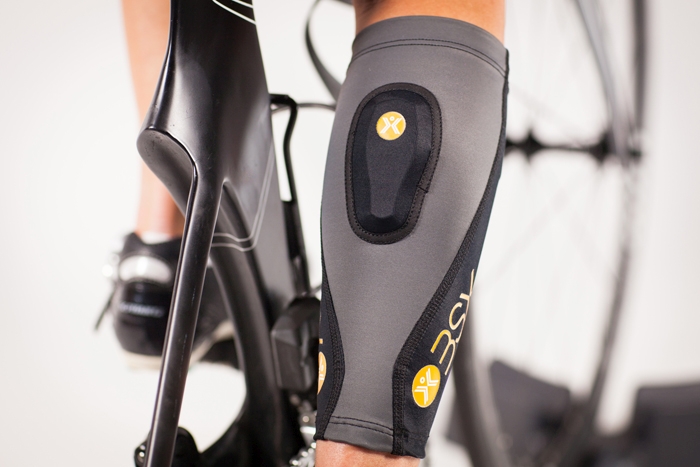You are viewing 1 of your 1 free articles. For unlimited access take a risk-free trial
Feel the burn!

If you want to ensure your training is really effective, it needs to be targeted both in terms of duration and intensity. Duration is easily measured by glancing at your watch. Ensuring the right intensity however can be a little trickier. Heart rate zones and perceived exertion are useful tools but neither gives you and insight into what’s actually happening at a more fundamental level in the muscles.
That’s where lactate monitoring can be invaluable; measuring lactate concentration in the blood provides a direct insight into what’s actually happening biochemically in muscles and which energy systems are being used within your muscles. Importantly, by monitoring your blood lactate levels, you can more effectively target your preferred training zone – for example, ensuring that you remain in zone 1 (below 2mM/L of lactate – ideal for base training) and don’t stray into zone 2 (above 2mM/L but below 4mM/L) – see issue 350 for a more detailed explanation.
The problem with monitoring your blood lactate to regulate intensity revolves around the practicalities of its invasive nature, especially outside the laboratory.
For example, riding or running along while stabbing yourself in the finger to take a blood sample and then inserting a test strip into a machine and awaiting a reading is hardly practical! This explains why in the past, lactate measurements have mostly been used in a technical setting and in combination with other measurements such as power, speed and heart rate – ie as an adjunct rather than a prime means of targeting a zone. But recently technology for monitoring blood lactate looks set to overcome these limitations and a recent study provides evidence that this technology could allow athletes to simply and accurately monitor levels of blood lactate*.
The research
In the study, researchers tested the accuracy of a new non-invasive method of monitoring blood lactate using a ‘BXinsight’ device (see figure 2). Simply worn against the skin, BSXinsight uses LED lights to ‘look’ into the calf muscle. As the light array passes through muscle tissue, it creates a signal that can be processed to generate a real-time lactate threshold curve, which is claimed to be as accurate as previous blood-sampling methods. To test the validity of these claims, a group of runners ranging from recreationally active to highly trained athletes completed an incremental exercise test to exhaustion on a treadmill. Blood lactate samples were taken at the end of each 3-minute stage during the test to determine lactate threshold (the point at which lactate levels start to accumulate rapidly) using five traditional and proven methods based on traditional blood lactate sampling. These results were compared against the data obtained from the BSXinsight device.FIGURE 2: BSXINSIGHT WEARABLE LACTATE MONITOR

The findings
The main finding was that the lactate readings from the wearable BXinsight device were in excellent agreement with the lactate figures obtained using blood sampling. Moreover, when the researchers carried out repeat trials with some of the runners, they obtained consistently accurate and repeatable results. Commenting on their findings, the researchers concluded that the wearable lactate technology device was a practical, reliable, and non-invasive tool for predicting lactate threshold in runners. *J Strength Cond Res. 2016 Aug;30(8):2212-8PP VERDICT
Because lactate accumulation is a fundamental measure of how hard you’re working, and how efficiently your muscles are responding to a workload, being able to measure it quickly and easily is extremely useful. Just like heart rate monitors and power meters, lactate measuring devices have the potential to make targeted, effective training much easier to achieve. What this study demonstrates is that wearable lactate devices can be as accurate as conventional (invasive) blood sampling methods, so expect to see these devices becoming popular very soon!PRACTICAL SUGGESTIONS
- Lactate monitoring can not only help you target your preferred training zone, it can provide a guide to your fitness trends. For example, lower levels of lactate at a given heart rate or power output will usually translate into better race performance. To obtain the greatest insight into fitness trends therefore, you should aim to combine lactate measurements with other data.
- If you’re put off considering lactate meters by technology or expense , don’t despair – simply monitoring your breathing rate and perceived effort during exercise can help you determine your zone, and when you reach the boundaries between training zones (panel 1 below).
PANEL 1: USING PERCEIVED EFFORT AND BREATHING RATE TO DETERMINE TRAINING ZONES
ZONE 1 TRAINING
- Effort level – easy; you feel like you can keep going and going
- Ventilation - you can speak comfortably, recite the alphabet etc
TRANSITION FROM ZONE 1 TO ZONE 2
- Effort level – sustainable but becoming a little harder
- Ventilation – speaking requires some effort at this point
ZONE 2 TRAINING
- Effort level - Somewhat hard but still sustainable (for an hour or two)
- Ventilation - speaking is possible but not at all easy (you’d struggle to hold a conversation)
TRANSITION FROM ZONE 2 TO ZONE 3 (RACE PACE)
- Effort level – exercise starts to feel much, much harder
- Ventilation – speaking is still possible but becomes difficult to utter more than a few words
ZONE 3 TRAINING
- Effort level – very hard indeed; exhaustion soon sets in!
- Ventilation - speaking is virtually impossible apart from the odd word
Newsletter Sign Up
Testimonials
Dr. Alexandra Fandetti-Robin, Back & Body Chiropractic
Elspeth Cowell MSCh DpodM SRCh HCPC reg
William Hunter, Nuffield Health
Newsletter Sign Up
Coaches Testimonials
Dr. Alexandra Fandetti-Robin, Back & Body Chiropractic
Elspeth Cowell MSCh DpodM SRCh HCPC reg
William Hunter, Nuffield Health
Keep up with latest sports science research and apply it to maximize performance
Today you have the chance to join a group of athletes, and sports coaches/trainers who all have something special in common...
They use the latest research to improve performance for themselves and their clients - both athletes and sports teams - with help from global specialists in the fields of sports science, sports medicine and sports psychology.
They do this by reading Sports Performance Bulletin, an easy-to-digest but serious-minded journal dedicated to high performance sports. SPB offers a wealth of information and insight into the latest research, in an easily-accessible and understood format, along with a wealth of practical recommendations.
*includes 3 coaching manuals
Get Inspired
All the latest techniques and approaches
Sports Performance Bulletin helps dedicated endurance athletes improve their performance. Sense-checking the latest sports science research, and sourcing evidence and case studies to support findings, Sports Performance Bulletin turns proven insights into easily digestible practical advice. Supporting athletes, coaches and professionals who wish to ensure their guidance and programmes are kept right up to date and based on credible science.





